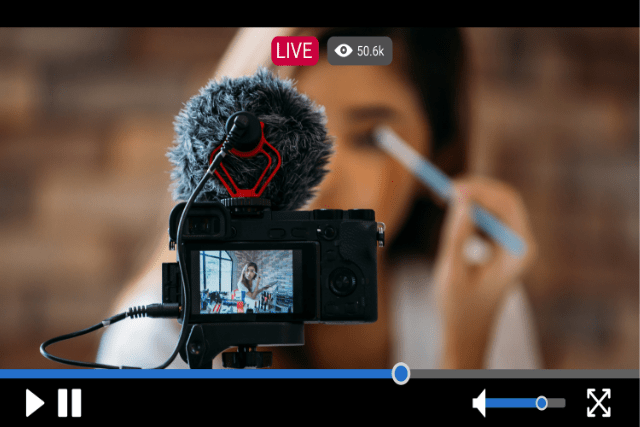Are you looking to boost the success of your online store? Look no further than building an email list. This post will uncover proven tactics to help you establish and grow a highly engaged email subscriber base.
By implementing these strategies, you’ll unlock the power of email marketing, enabling you to connect with your target audience and drive conversions effectively.
Get ready to supercharge your online retail business with our actionable tips and techniques for building an email list that delivers optimal results.
Table of Contents
Key Takeaways
- Content marketing and optimizing blog posts are effective strategies for list building.
- Guest blogging on reputable websites can help reach a wider audience and establish credibility.
- Using effective email capture pop-ups can help attract subscribers by offering enticing incentives.
- Crafting engaging email campaigns and building customer loyalty through personalized techniques are crucial for maintaining a strong email list.
Understanding the Importance of Email Marketing
You need to understand the importance of email marketing if you want your online store to thrive and connect with your customers on a deeper level. Building an email list for ecommerce success is a key strategy that can help drive sales and boost customer loyalty.
Effective email list building for online businesses allows you to communicate directly with your target audience and nurture relationships over time.
Opt-in email marketing tips for ecommerce can significantly increase your chances of success. By offering valuable incentives, such as exclusive discounts or freebies, you can encourage visitors to subscribe to your email list. This grows your online store’s email subscribers and creates a sense of exclusivity and urgency that drives sales.
Email list-building tactics for online retailers involve creating compelling content that engages and resonates with your audience. Providing relevant information, personalized recommendations, and helpful tips will keep subscribers interested in what you have to say.
Data-driven strategies are crucial when it comes to building an effective email list. Analyzing metrics like open rates, click-through rates, and conversion rates helps you understand what works best for your audience so you can optimize future campaigns.

Identifying Your Target Audience
Imagine effortlessly connecting with your ideal customers by understanding who they are and what they truly desire. To build a successful email list for your online store, it is crucial to identify your target audience. You can tailor your email capture techniques for online stores to attract the right customers.
Craft compelling opt-in forms that communicate the value of subscribing to your emails. Offer incentives such as exclusive discounts or valuable content in exchange for their email address. This will entice website visitors to convert into loyal email subscribers.
Implement effective email subscription strategies for online stores by segmenting your audience based on their preferences and behaviour. Send personalized emails that resonate with each group, addressing their needs and desires. This level of personalization fosters a sense of trust and connection with your subscribers.
Lastly, prioritize consistent engagement and communication with subscribers through regular newsletters or promotional emails. Provide them with relevant content that adds value to their lives while promoting your products subtly.
Creating Compelling Lead Magnets
Crafting enticing incentives, such as exclusive offers or valuable resources, can captivate your target audience and entice them to share their contact information. Engaging email marketing for ecommerce success relies heavily on creating compelling lead magnets that provide value to your potential customers.
Effective lead magnet ideas for online stores include free e-books or guides related to your niche, access to exclusive content or discounts, and personalized product recommendations based on customer preferences. These incentives not only attract potential customers but also help in segmenting your email list.
Optimizing email signup forms is crucial for increasing conversions. Keep the form simple and concise, asking only for necessary information like name and email address. Consider using single-step opt-ins or pop-ups at strategic moments during the customer’s journey.
Nurturing leads through email marketing involves providing relevant content consistently while avoiding excessive promotions. Personalize your emails based on previous interactions with the customer to strengthen engagement.
Optimizing Website Forms for Maximum Conversions
Maximizing website form conversions is essential for creating a seamless user experience and ensuring potential customers effortlessly provide their information. When building an email list for your online store, optimizing your website forms can significantly boost online sales and increase the success of your email marketing campaigns.
Best Practices for Designing Effective Website Forms
Designing effective website forms is crucial for user experience and conversion rates. Here are some best practices to consider when creating website forms:
- Keep it simple and concise: Limit the number of fields in your form to only what’s necessary. This reduces friction and increases the likelihood of users completing the form.
- Use clear, descriptive labels: Ensure that each form field has a clear and descriptive label, making it easy for users to understand the required information.
- Group related fields: Organize your form fields logically by grouping related fields. This makes the form easier to navigate and complete.
- Use placeholder text: Use placeholder text within form fields to provide examples or additional guidance on the required information.
- Implement inline validation: Provide real-time feedback on user input by validating form fields as users complete them. This helps users correct errors before submitting the form.
- Optimize for mobile devices: Ensure that your forms are responsive and easy to use on mobile devices. Consider using larger form fields, buttons, and touch-friendly design elements.
- Make required fields clear: Indicate which form fields are required and which are optional. This helps users understand what information is necessary to complete the form.
- Use appropriate input types: Use the correct input types for each form field (e.g., email, phone number, date). This improves usability and helps with form validation.
- Provide helpful error messages: When users encounter errors, provide clear and helpful messages explaining how to resolve the issue.
- Test and iterate: Regularly test your forms for usability and conversion rates. Gather feedback from users and make improvements based on their input.
Following these best practices, you can create website forms that are user-friendly, efficient, and effective in capturing the information you need.
Best Software for creating Website Forms
There are numerous software options available that can help you create and manage forms with ease. Here are some of the best software options for creating website forms:
- Google Forms (Free)
- Easy to use and integrate with other Google services
- Offers a variety of templates and customization options
- Automatically collects and organizes form responses in Google Sheets
- Website: Google Forms
- Typeform (Free and Paid plans)
- Known for its conversational, user-friendly forms
- Offers a wide range of templates and customization options
- Integrates with various third-party services
- Website: Typeform
- JotForm (Free and Paid plans)
- Offers a drag-and-drop form builder with a variety of templates
- Provides advanced features like conditional logic, file uploads, and payment integrations
- Supports integrations with popular CRM, email marketing, and project management tools
- Website: JotForm
- Formstack (Paid plans)
- A powerful form builder with advanced features like conditional logic, e-signatures, and data encryption
- Offers a variety of integrations with popular tools like Salesforce, Mailchimp, and Google Analytics
- Provides analytics and reporting features to track form performance
- Website: Formstack
- Wufoo (Free and Paid plans)
- Offers a user-friendly form builder with a variety of templates and customization options
- Supports file uploads, payment integrations, and conditional logic
- Provides analytics and reporting features to track form performance
- Website: Wufoo
- Gravity Forms (Paid plans, WordPress plugin)
- A popular WordPress plugin for creating advanced forms
- Offers a wide range of add-ons for integrations, payment processing, and more
- Provides conditional logic, multi-page forms, and file uploads
- Website: Gravity Forms
- Ninja Forms (Free and Paid plans, WordPress plugin)
- A flexible and easy-to-use form builder for WordPress
- Offers a variety of add-ons for integrations, payment processing, and advanced features
- Supports conditional logic, file uploads, and multi-step forms
- Website: Ninja Forms
These software options cater to different needs and budgets, so evaluating each one is essential based on your specific requirements. Consider factors like ease of use, customization options, integrations, and pricing when choosing the best software for creating website forms.
Leveraging Social Media for List Building
Utilize social media platforms to effortlessly grow your audience and expand your reach, connecting with potential customers through engaging content and interactive posts. Social media provides a powerful list-building tool, allowing you to promote your online store and encourage sign-ups for your email list. Here are three effective strategies to leverage social media for successful list building:
- Create compelling content: Share valuable information, tips, and updates about your industry or niche. By providing helpful and relevant content, you can establish yourself as an authority in the field and attract followers interested in your offer.
- Run contests or giveaways: People love freebies! Organize exciting contests or giveaways that require participants to sign up for your email list. This not only encourages engagement but also helps build a quality subscriber base.
- Collaborate with influencers: Identify influencers within your niche with a significant social media following. Partnering with them can expose your brand to a broader audience, increasing the chances of attracting new subscribers.
By incorporating these strategies into your social media marketing efforts, you can effectively grow your email list while establishing trust and credibility with potential customers.
Remember, always prioritize the safety of your audience by adhering to best practices for online privacy and data protection.
Using Content Marketing to Grow Your Email List
Now that we’ve discussed leveraging social media for list building let’s dive into another powerful strategy: using content marketing to grow your email list.
Content marketing involves creating and sharing valuable, relevant, consistent content to attract and engage your target audience. You can establish trust and credibility with potential customers by providing helpful information and addressing their pain points.
One effective way to use content marketing for list building is by offering valuable resources in exchange for email addresses. This could be a free e-book, guide, or exclusive access to premium content.
Another tactic is creating high-quality blog posts optimized for search engines. By ranking well in search results, you can attract organic traffic from people actively searching for the information you provide. Including a call-to-action within these blog posts can encourage readers to subscribe to your email list.
Also, read: How To Use Emotional Triggers in Blog Post Titles.
Furthermore, consider guest blogging on other reputable websites within your niche. This allows you to reach a wider audience while establishing yourself as an industry expert. Include a bio or author box with a link to your website where visitors can join your mailing list.
Implementing Effective Email Capture Pop-ups
Implementing effective email capture pop-ups can significantly increase our subscriber base and boost conversions on our website. Here are four key strategies to make these pop-ups successful:
- Timing is crucial: Display the pop-up at the right moment when visitors are engaged with your content or have shown intent to exit, ensuring maximum visibility without being intrusive.
- Offer an enticing incentive: Provide a valuable lead magnet such as exclusive discounts, free resources, or personalized recommendations in exchange for visitors’ email addresses. This encourages them to share their contact information willingly.
- Please keep it simple and concise: Design a clean and visually appealing pop-up that communicates the benefits of subscribing. Use persuasive copy and a compelling call-to-action button to make it easy for users to sign up.
- Allow easy dismissal: Include a clear option for visitors to close the pop-up if they choose not to subscribe. Please respect their decision and avoid frustrating them with complex closing mechanisms.

Remember, building an email list ethically and responsibly ensures the safety of our subscribers’ data while driving business growth.
Crafting Engaging Email Campaigns
Crafting engaging email campaigns is the key to capturing your audience’s attention and leaving them eagerly awaiting your next message.
Firstly, personalization is crucial in today’s digital landscape. By segmenting our email list based on customer preferences and behaviours, we can tailor our messages to specific groups, increasing open and click-through rates. Additionally, incorporating dynamic content allows us to showcase relevant products or promotions based on individual customer interests.
Furthermore, compelling subject lines are essential for grabbing attention and increasing email open rates. We conduct extensive A/B testing to determine which subject lines perform best among our audience. By analyzing data such as open and conversion rates, we can refine our strategies to deliver captivating subject lines consistently.
Lastly, maintaining consistency in design and branding across all emails helps build customer trust. We ensure each email reflects our brand identity while providing valuable content or offers.
Analyzing and Segmenting Your Email List
By understanding your customers’ preferences and behaviours, we can effectively analyze and segment our email list, ensuring each message resonates with the right audience. Here are five key strategies for analyzing and segmenting your email list:
- Demographic Segmentation: Divide your email list based on age, gender, location, or other relevant demographic information. This helps tailor your messages to specific groups.
- Behavioural Segmentation: Analyze customer behaviour,, such as purchase history, website activity, or engagement with previous emails. This allows you to send targeted emails based on their specific actions.
- Preference Segmentation: Ask customers about their preferences during the signup process or through surveys. Use this information to create personalized content that aligns with their interests.
- Lifecycle Segmentation: Segment your list based on where customers are in their buying journey – new prospects, active customers, or lapsed buyers. Deliver targeted messages that cater to their current stage.
- Personalized Recommendations: Utilize data-driven algorithms to provide personalized product recommendations based on past purchases or browsing behaviour. This creates a sense of individualized attention and increases customer satisfaction.

Segmenting your email list ensures you deliver relevant content directly to each subscriber’s inbox. Implementing these strategies will improve open and click-through rates, ultimately driving more conversions for your online store.
Building Customer Loyalty through Email Marketing
Create a strong bond with your customers by using personalized email marketing techniques that make them feel valued and appreciated. Building customer loyalty is crucial for the success of your online store, and email marketing can be a powerful tool to achieve that. By sending targeted and customized emails, you can foster a sense of belonging and trust among your customers.
To effectively build customer loyalty through email marketing, it’s essential to understand their preferences, interests, and buying behaviour. Segmenting your email list based on these factors allows you to send relevant content and offers tailored to each customer’s needs. This personalization makes them feel special and increases their engagement with your brand.
Incorporating emotions into your emails can further strengthen the bond with customers. Here’s an example table that showcases how different emotions can be evoked in customers through effective email marketing:
| Emotion | Technique | Example |
|---|---|---|
| Gratitude | Thank-you emails | “We appreciate your continued support! Enjoy 10% off on your next purchase.” |
| Excitement | Exclusive offers | “Be the first to shop our new collection! Get early access before anyone else.” |
| Trust | Testimonials | “Hear what our satisfied customers have to say about us!” |
| Belonging | Personalized recommendations | “Based on your past purchases, we think you’ll love these products.” |
Utilizing these strategies in your email marketing campaigns can create a loyal customer base that feels valued and appreciated. Start building lasting relationships with personalized emails today!
Frequently Asked Questions
How can I ensure email marketing efforts drive sales for online stores?
To ensure the effectiveness of our email marketing efforts in driving sales for our online store, we need to follow a few key strategies. Firstly, segment our email list based on customer preferences and behaviours to send targeted and personalized emails.
Optimize email subject lines and content to grab attention and encourage click-throughs. Lastly, regularly analyze data such as open rates, click-through rates, and conversion rates to make informed decisions and continually improve our campaigns for maximum impact.
How often should I send emails to my subscribers without overwhelming them or causing them to unsubscribe?
We should balance staying top of mind and avoiding overwhelming our subscribers. Research suggests that sending emails once or twice weekly effectively keeps engagement high without causing unsubscribes. However, it’s important to test and analyze your audience’s response rate to find the optimal frequency for your online store. Monitoring metrics like open and click-through rates will help you fine-tune your email schedule for maximum impact.
What are some tips on creating engaging and compelling content for my email campaigns?
To create engaging and compelling content for email campaigns, we focus on personalization and relevance. By segmenting our subscribers based on their preferences and behaviours, we tailor the content to their specific needs. We also use eye-catching subject lines and clear calls to action to encourage interaction. Incorporating visuals and multimedia elements helps capture attention and enhance the overall experience. Additionally, testing different formats and analyzing data allows us to optimize our content for maximum engagement continuously.
What are the best practices for segmenting my email list to deliver personalized and relevant content to my subscribers?
Segmenting your email list is crucial for delivering personalized and relevant content. By dividing subscribers based on demographics, purchase history, and engagement levels, we can tailor messages to their interests and needs. This approach increases open rates and boosts click-through rates and conversions. According to a recent study, segmented campaigns have shown a 760% increase in revenue. So don’t miss out on this opportunity to connect with your subscribers on a deeper level and drive more sales.
Conclusion
Building an email list is crucial for the success of any online store. By understanding the importance of email marketing and identifying your target audience, you can create compelling lead magnets and optimize website forms to drive maximum conversions.
Leveraging social media and implementing effective email capture pop-ups will further enhance your list-building efforts. Crafting engaging email campaigns and analyzing your email list through segmentation will ensure personalized customer communication.
Building customer loyalty through strategic email marketing will ultimately increase sales and business growth. Start building your email list today!







